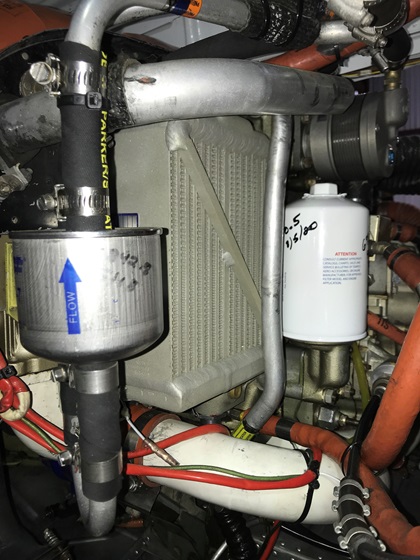Aircraft Maintenance: The five pillars of engine health monitoring
Monitoring the health of your aircraft's engine protects your personal safety as well as your wallet. As with so many other aspects of aircraft maintenance, catching problems early can make them easier and less expensive to solve while mitigating the risk of in-flight failures.
The five pillars of engine health monitoring are:
- Engine data monitoring
- Oil filter and screen inspection
- Oil analysis
- Cylinder compressions
- Borescope inspections
This is a very important distinction. Objective data can be thought of as data that provides quantifiable pass/fail or other results that are outside the bounds of normal operation. These data thresholds act as "alarms" that tell us something is clearly wrong, and that we need to investigate further to identify the source of the issue. Trend data is equally important, because trends can identify problems before they reach the point that they set off objective data alarms. Trend data can also identify changes that affect performance and efficiency, potentially mitigating repairs before excessive wear or damage is done.
Here is a brief summary of the objective and trend data provided by each of the five major areas of engine inspection.
Engine data monitoring
Engine monitor data can provide detailed data on many parameters including cylinder head temperature (CHT), exhaust gas temperature (EGT), oil temperature and more. Most systems can be set to alert the pilot when critical objective limits are exceeded such as high CHT, high oil temp, or excessive differences in EGTs. However, engine monitors are even more useful for their ability to provide trend data. By comparing flights over time, we can identify changes in these parameters that may indicate adjustments or repairs should be made. While not all aircraft have engine analyzers, all pilots have the ability to do their own monitoring of both objective limits (such as high CHTs or oil temp) and trend data (such as oil usage or how temps and performance compare to previous flights). Regardless of what's in your panel, you have the ability to use your eyes to observe and your kneeboard to record important data for future reference.
Oil filter and screen inspection

Inspecting an oil filter or screen during an oil change has given mechanics a glimpse into the health of an engine for as long as engines and filters have been around. While there is certainly some trend value in the amount and type of contaminants found, most of the value of a filter inspection is objective. We are looking at the amount and type of material caught in the filter to identify engines that are "making metal" and using the guidance provided by the manufacturers to determine the best course of action. As long as the amount of metal is well below those limits, we can also watch the metal amount for some trend information. However, this is of limited value unless the change in quantity is fairly obvious.
Oil analysis
While oil filter inspection is primarily an objective data tool, oil analysis is a perfect companion as it is primarily a trend data tool. Oil analysis measures how many metal particles made it past the filter or screen media and are suspended in the oil sample. These particles more commonly indicate wear trends, rather than coarse failures that send chips or whiskers of metal into the filter media. These trends can call attention to growing problems that can often lead to failures.
Cylinder compressions
The ubiquitous "compression test" has been the subject of more debate in engine maintenance articles than nearly anything else. Historically, it was the gold standard of measuring engine health at annual inspection. However, far too many cylinders were retired early due to misinterpretation or over-emphasis of the results and the compression test got a fairly bad reputation for being a poor judge of cylinder health. The reality is that compression tests are an excellent resource when used as a step in the process and in combination with other diagnostic tools. A compression test provides raw objective data that we can use to direct further investigation. When large deviations from the manufacturer's limits are found, a compression measurement does a good job identifying whether a problem exists, and where to look. It is not a good tool for trend data, as the individual results can vary greatly from test to test on the same engine.
Borescope inspections
Borescope inspections complement cylinder compression tests with visual data and a photographic history of the trending condition of valves, pistons, and cylinder walls. The compression test often tells us where to look for problems based on where the air is leaking out. The borescope inspection then allows us to focus and find the culprit. Using the research provided by Adrian Eichhorn, Mike Busch, Dave Pasquale, and others, it also allows us to evaluate exhaust valve heat signatures and monitor them for trends toward failure.
Consider this a brief introduction into the five pillars of engine health monitoring. In future articles, we will dive deeper into each subject so you can manage your engine's health like a pro. Until next time, I hope you and your families remain safe and healthy, and I wish you blue skies.



